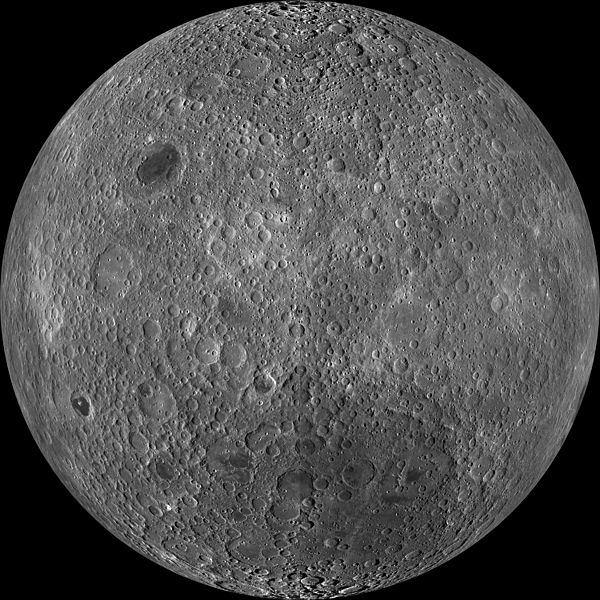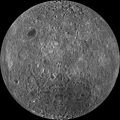Ӳкерчĕк:Moon Farside LRO.jpg
Курӑнакан калӑплав

Ҫак умкурӑмӑн виҫи: 600 × 600 пиксел. Ытти разрешенисем: 240 × 240 пиксел | 480 × 480 пиксел | 768 × 768 пиксел | 1024 × 1024 пиксел | 2048 × 2048 пиксел | 18 000 × 18 000 пиксел.
Оригиналлӑ файл ((18 000 × 18 000 пиксел, файл пысăкăше: 85,34 МБ, MIME-тĕсĕ: image/jpeg))
Файл историйĕ
Вӑхӑт ҫине пуссан, ун чухнехи версине пӑхма пулать.
| Дата/Вăхăт | Миниатюра | Калӑпӑш | Хутшăнакан | Асăрхав | |
|---|---|---|---|---|---|
| хальхи | 23:47, 19 Пуш уйӑхӗн 2014 |  | 18 000 × 18 000 (85,34 МБ) | Huntster | High resolution mosaic. |
| 04:12, 9 Ака уйӑхӗн 2011 |  | 1600 × 1600 (1,44 МБ) | Bubba73 | {{Information |Description ={{en|1=Far side of the Moon, by NASA's Lunar Recon. Orbiter}} |Source =http://apod.nasa.gov/apod/image/1104/farside_lro1600.jpg |Author =NASA - LRO |Date =2011? |Permission = |other_versions = } |
Файлпа усă курни
Ку файлпа усӑ куракан страницӑсем ҫук.
Файлпа глобаллӑ усӑ курасси
Ку файлпа ҫак викисенче усӑ курнӑ:
- af.wikipedia.org усӑ курасси
- az.wikipedia.org усӑ курасси
- be.wikipedia.org усӑ курасси
- bjn.wikipedia.org усӑ курасси
- bn.wikipedia.org усӑ курасси
- bs.wikipedia.org усӑ курасси
- ca.wikipedia.org усӑ курасси
- cs.wikipedia.org усӑ курасси
- de.wikipedia.org усӑ курасси
- en.wikipedia.org усӑ курасси
- en.wikibooks.org усӑ курасси
- en.wikiversity.org усӑ курасси
- Solar System, technical/Moon
- User:Marshallsumter/Radiation astronomy2/Visuals
- Draft:Original research/Planets
- User:Marshallsumter/Radiation astronomy2/Visuals/Quiz
- User:Marshallsumter/Rocks/Rocky objects/Astronomy
- User:Marshallsumter/Radiation astronomy/Courses/Principles/Hourly 2
- User:Marshallsumter/Radiation astronomy/Courses/Principles/Midterm quiz
- User:Marshallsumter/Radiation astronomy/Courses/Principles/Final quiz
- Titan/Quiz
- User:Marshallsumter/Rocks/Rocky objects
- Draft:Enceladus/Quiz
- Moon/Quiz
- Stars/Sun/Heliology/Quiz
- Earth/Quiz
- Stars/Reds/Quiz
- Draft:Dione/Quiz
- User:Marshallsumter/Radiation astronomy2/Scattered disks/Quiz
- User:Marshallsumter/Radiation astronomy1/Kuiper belts/Quiz
- Liquids/Liquid objects/Moon
- User:Marshallsumter/Radiation astronomy/Craters
- es.wikipedia.org усӑ курасси
Ку файлпа глобальлӗ епле усӑ курнине пӑх.


